
Land Rover Defender engines, drive and performance
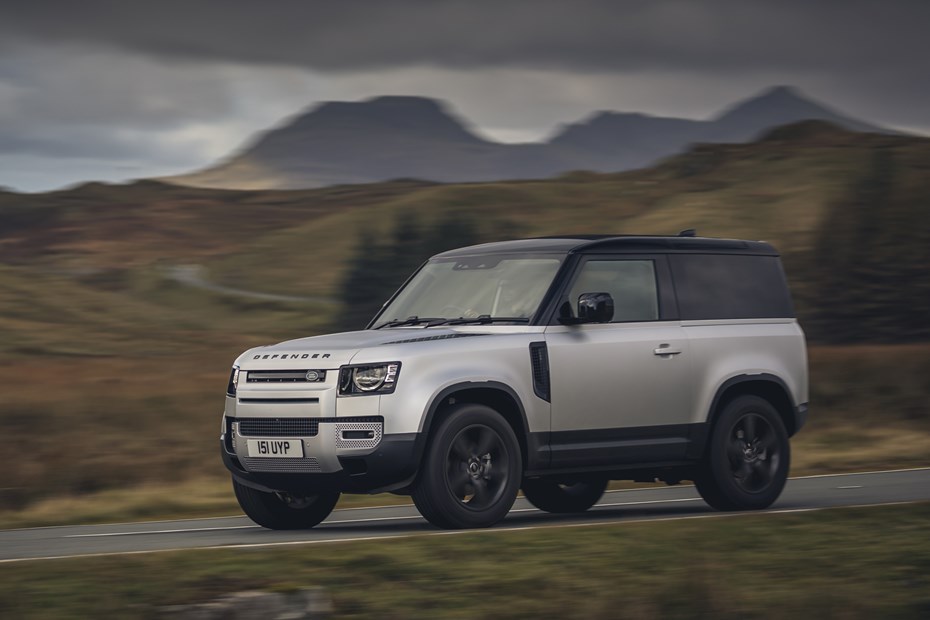
- Fine on- and off-road performance
- Mild-hybrid tech for most engines
- No plug-in hybrid for the 90 range
As mentioned earlier in this review, the exact engine mix available for the Defender 90 is slightly confusing in that initial diesel orders were for a 2.0-litre, four-cylinder engine in two power outputs, but very few were actually built in this specification.
In reality, by the time deliveries began in earnest in spring 2021, all of the diesels had been upgraded to 3.0-litre, six-cylinder units with mild-hybrid technology called D250 and D300.
There are also two petrol engines, but no plug-in hybrid versions as you’ll find in the larger 110.
All Defender 90s feature four-wheel drive and an eight-speed automatic gearbox, with a set of low-range ratios for off-road driving available at the touch of a button.
There are no paddles on the steering wheel for when you want to take manual control, but the gearbox is so well calibrated you hardly ever find yourself floundering in a high gear. Alternatively, you can just slide the gearlever to the side and manually shift with that instead.
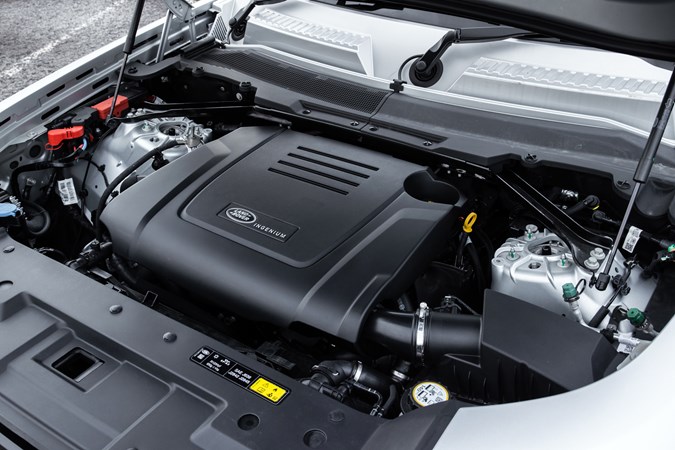
Diesel engines
We’ve tested the D240 2.0-litre in the 110, which proved to be smooth and generates a comfortable turn of pace for a vehicle of this size. It does need to work hard if you want to get up to speed in a hurry, but you generally drive in a laidback nature that completely suits the Defender’s character.
The automatic gearbox helps compensate the overall lack of power by hanging onto gears a little longer, letting the engine rev higher before shifting up – thankfully this doesn’t compromise on refinement. If anything, this sounds pretty good for a four-cylinder diesel, generating an artificial low-end rumble in the cabin.
However, while the 2.0-litre made a good first impression during the Defender’s initial launch, the brawnier, 3.0-litre six-cylinder diesel engine takes a leap forward in performance and refinement.
We tried the D250 and the silky smooth power delivery helps the 90 feel far more like a luxury vehicle, while the additional torque means you don’t have to rev it so much either. This natural performer simply lets you glide around in the Defender, which is a far cry from its agricultural predecessor.
Petrol engines
Driven exclusively off-road for this review, the P300 proved to be capable to generating enough pulling power to haul the Defender 90 up very steep inclines, while managing to deliver its torque in a progressive, linear manner, free from sudden surges of grunt.
Things are certainly more aurally pleasing with the six-cylinder engine in the P400. At motorway speeds it’s hushed and unstressed, but provoke the throttle pedal and it surges forwards with a degree of pace that seems at odds with the Defenders’ squared-off styling.
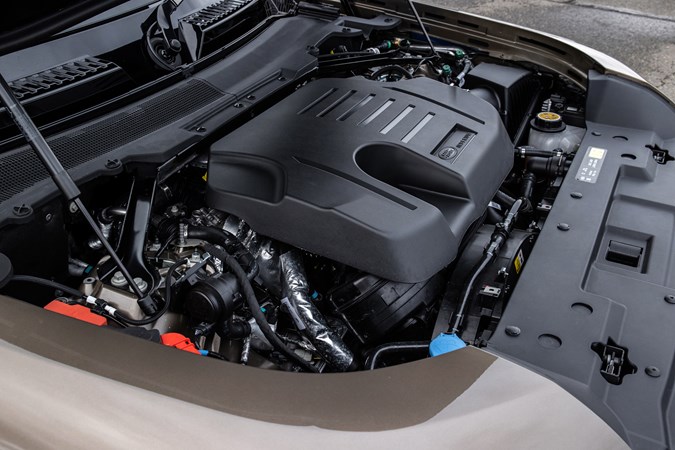
As for the range-topping P525, it’s totally unnecessary – but good fun. Put your foot down and the car squats down before rocketing off towards the horizon at an almost worrying rate. There’s more than enough power here to unseat the inexperienced driver, but if you’re sensible it actually makes for a highly pleasant drive, being smooth and relaxed at lower throttle inputs.
There’s a distinct lack of aural drama, though, which is a shame – previous Land Rover V8s have majored on sounding like a brass band in parade when you hoof it, but the Defender V8 offers up little more than a subdued rumble.
What’s it like to drive?
- Surprisingly capable on-road
- Extraordinarily agile off it
- Air suspension improves matters further
As much as it’ll cause further anguish to Land Rover traditionalists still lamenting the new Defender 90’s lack of ovine transportation abilities, the truth is that most of these cars will mostly spend their time on metalled roads.
The good news here is that Land Rover has ensured it has fine manners for when it’s driven on asphalt, cornering with more precision than a full-sized Range Rover, but without the degree of feeling you would experience in an Evoque – it’s a well-judged compromise that suits the Defender’s character.
You’d be right to expect a fair degree of bodyroll, but the models we’ve tried on air suspension remain composed and the 90 avoids feeling top-heavy most of the time, despite being so high up.
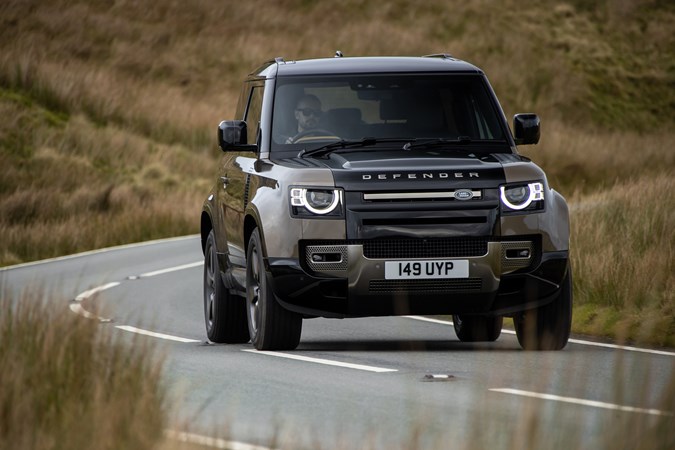
Tyres with high sidewalls surrounding smaller wheel rims together combine to contribute to a cushioned ride quality, but we would recommend spending extra on the adaptive air suspension for even greater agility and comfort. Hustling the a P400 version on winding back roads fitted with the air springs confirmed that bodyroll is kept in check, enabling higher speeds to be maintained, but tackle a corner a bit too hot and it will push wider than your intended line – a problem exacerbated by the optional off-road tyres.
While the controls don’t offer a tremendous amount of communication, they’re reassuringly weighty, allowing the 90 to feel easy to control and – whisper it – fun to drive. There’s not much weighting from the steering wheel immediately off-centre, but it builds up quickly enough thereafter. It’s a well judged balance overall, offering a little more agility over the 110 while remaining comfortable.
A Land Rover wouldn’t be worthy of its green oval badge if it wasn’t capable of incredible off-roading feats and the latest 90 doesn’t disappoint in this regard, either.
Even the standard coil suspension allows it to tackle terrain that looks barely possible for an adventurous goat to be able to pass, and with the height-adjustable nature of the air springs, you’ve got even more ground clearance – 291mm in fact.
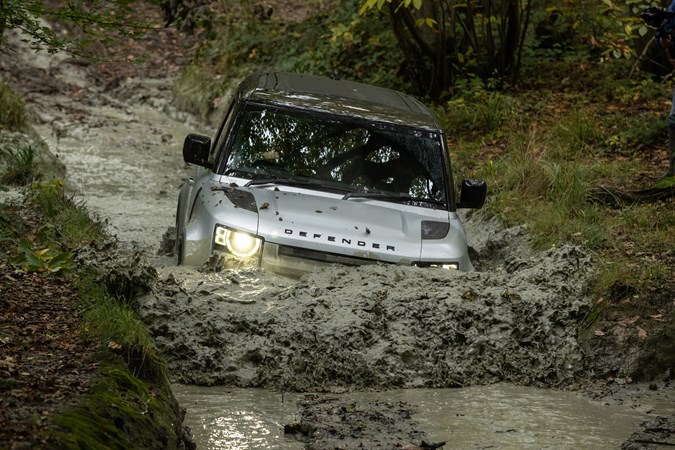
Factor in other eye-widening stats such as its ability to wade through water 900mm deep, climb 38-degree slopes and descend ones of 40 degrees and you have a car that’s an astonishing all-rounder.
Naturally, as previously mentioned, there’s a host of electronic kit available that assists the driver make light work of a variety of topographic situations, including Terrain Response 2 drive modes that monitor the kind of surface being driven on and All-Terrain Progress Control – off-road cruise control for low-speed use.
But, for serious off-roading, one option that’s a must-have is the active differential to allow the central and rear portions to be locked, maximising the Defender’s ability to get itself out of bother.
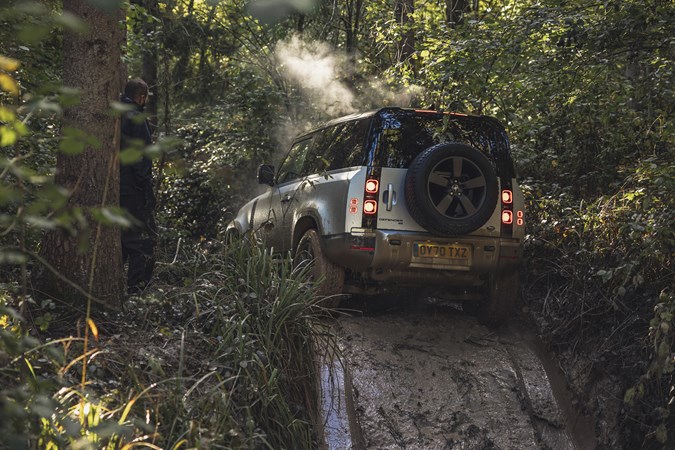


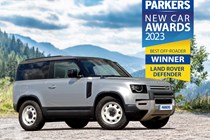
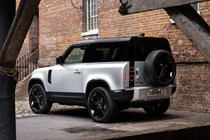
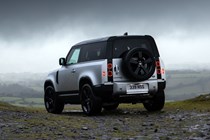
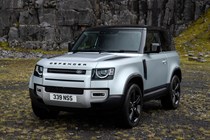
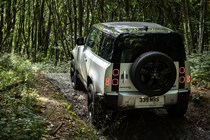
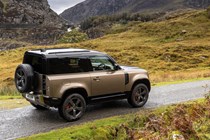
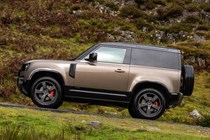
.jpg)
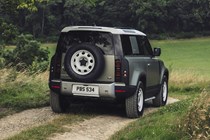
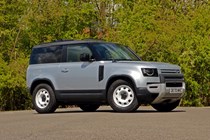
.jpg)
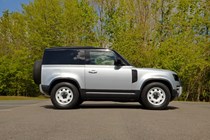

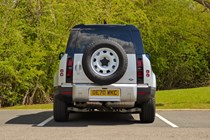

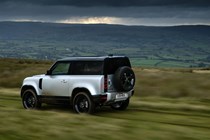

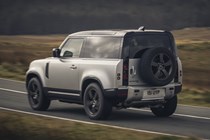
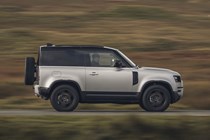

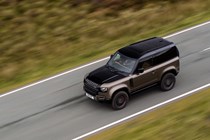
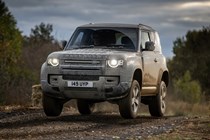

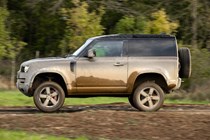
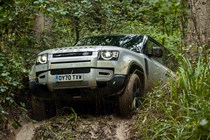

.jpg)
.jpg)
.jpg)
.jpg)
.jpg)
.jpg)
.jpg)
.jpg)
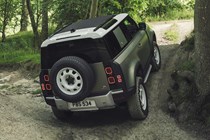
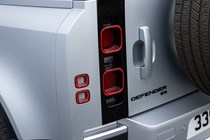
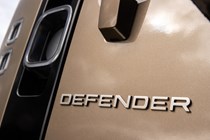
.jpg)
.jpg)

.jpg)
.jpg)
.jpg)
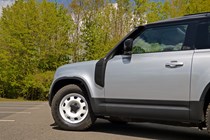
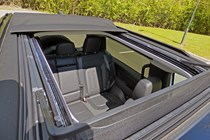
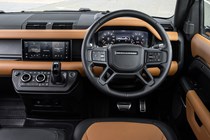
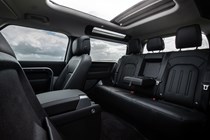
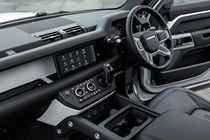
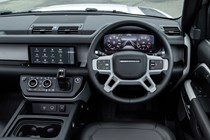
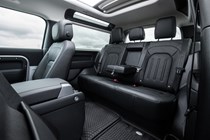
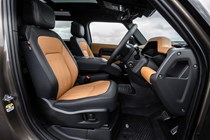


.jpg)
.jpg)
.jpg)
.jpg)
.jpg)
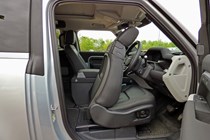

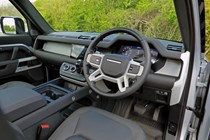
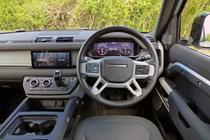
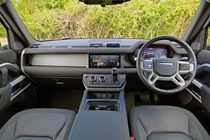
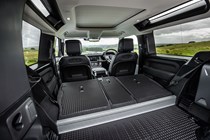
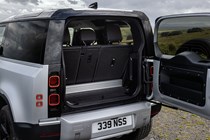

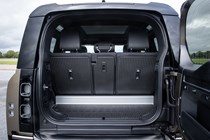
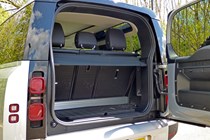

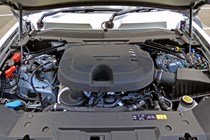








.jpg?quality=50)


.jpg?quality=50)















.jpg?quality=50)
.jpg?quality=50)
.jpg?quality=50)
.jpg?quality=50)
.jpg?quality=50)
.jpg?quality=50)
.jpg?quality=50)
.jpg?quality=50)



.jpg?quality=50)
.jpg?quality=50)

.jpg?quality=50)
.jpg?quality=50)
.jpg?quality=50)










.jpg?quality=50)
.jpg?quality=50)
.jpg?quality=50)
.jpg?quality=50)
.jpg?quality=50)












